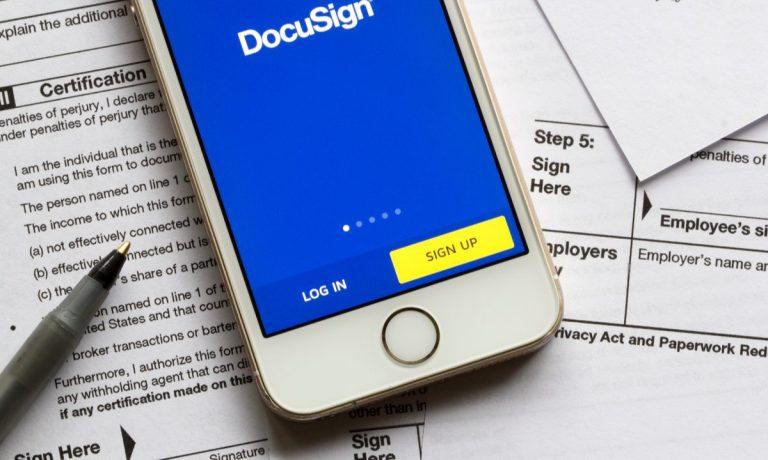
DocuSign’s plummeting stock signals one thing: The great digital shift is over.
That’s what seems to be implied by a 20% drop — as of this writing — that comes in tandem with soft guidance.
Now, on Wall Street, tapering growth raises alarm bells — chiefly because a slowdown in revenue growth, all else being equal, translates into slowing earnings growth (or the eventual emergence of positive earnings). And with companies that have been benefiting from the work from home pivot — chief among them DocuSign — at least some investors might have been assuming that growth would be, no matter what, sharply up and to the right.
We’re being a bit simplistic here, but we wonder if the sell-off might be — as it so often is, with tech firms and their stocks — a case of shoot first and ask questions later.
At a high level, the company is forecasting For the current quarter, DocuSign expects revenue growth of 24% at the midpoint for the current quarter, as measured year over year and between 17% to 18% during the entire fiscal year 2023. That’s a slowdown, indeed, from the 35% revenue growth that was seen in the most recent quarter, and the 45% seen in the most recent fiscal year.
In some respects, post-earnings stock trading is a game played in inches — if management meets analyst expectations, if they overshoot it or miss it, and by how much.
But some trends seem intact. Management noted on the call that paper is still being abandoned.
“As people begin to return to the office, they are not returning to paper,” CEO Dan Springer said. “eSignature and the broader Agreement Cloud will only continue to gain prominence in the evolving Anywhere Economy.” And in quantifying that potential at over $2 billion in annual revenue, “we believe we’re still very early in the first 10% of the $50 billion Agreement Cloud market opportunity.” Digital transformation at businesses in every industry, he said.
Supplementary materials released by the company show that DocuSign’s customer base is growing by more than 50% on a CAGR. Net dollar retention, at 119%, indicates that recurring revenue from existing customers remains strong.
Still Getting Connected
And of course, the great digital shift’s end is nowhere in sight.
PYMNTs data through the pandemic have underscored the cementing of certain digital behaviors. The web of connectivity that has become cemented in life certainly applies to the professional setting. Back in 2021, for example, with our landmark study that defined various pillars that had undergone tech-enabled shifts, more than half of consumers reported being highly connected at work.
That connectivity, of course, would include the reduction of manual processes, of the paper-based flows that have underpinned all manner of B2B and B2C interactions through the ages. The return to office settings would not mean that we’ll see a return to the “wet signatures” so ingrained pre-pandemic — and which would seem so, well, 2019.